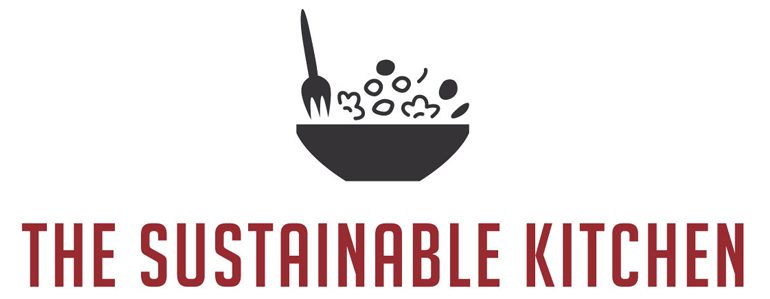Honestly, what’s not to love about Japanese Milk Bread? It’s soft and pillowy in a way that almost doesn’t make sense. American bread? Too dense, too chewy—this bread feels like eating air if that were possible (and satisfying). The texture is so light and fluffy that you almost forget you’re eating bread. Plus, the slightly sweet flavor makes it perfect for everything from sandwiches to just tearing off a piece and inhaling it straight from the pan. Let’s be real—who needs dignity when the bread is this good?
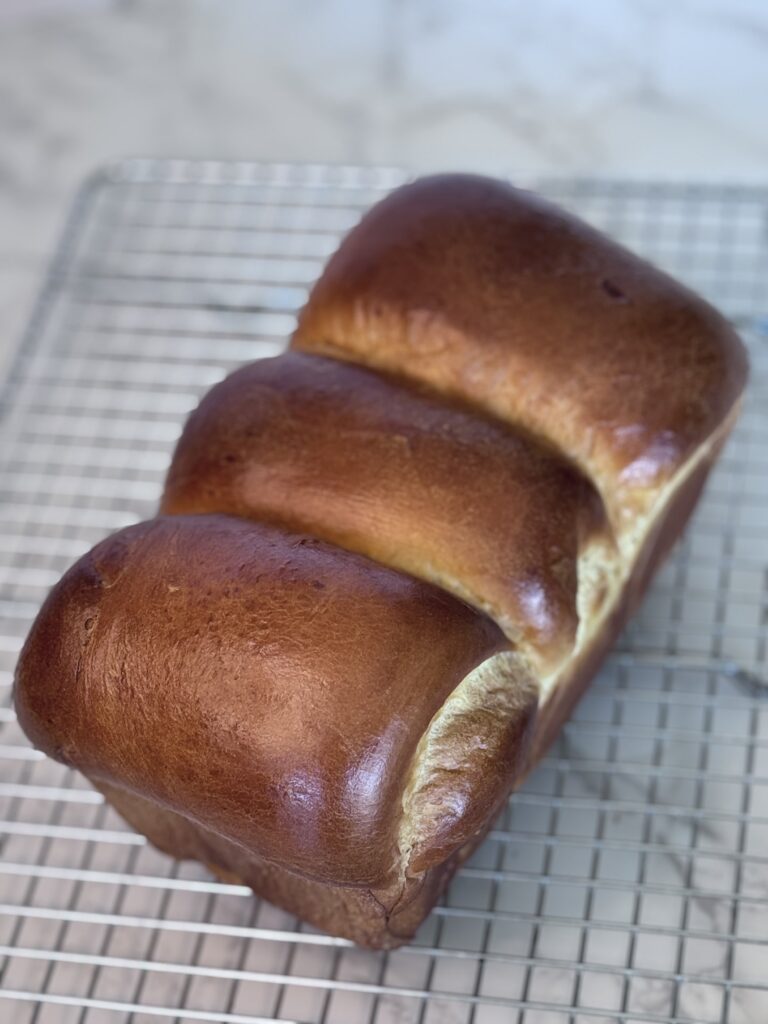
Why This Recipe Works
This recipe works for a couple of reasons, but the real MVP is the tangzhong method. It’s a fancy-sounding technique that’s surprisingly easy—essentially, you’re cooking a little flour and milk into a paste before adding it to the dough. What this does is lock in moisture, making the bread ultra-soft and keeping it that way for days (because stale bread is the enemy).
The dough is enriched with milk, butter, and a touch of sugar, which not only gives it that perfect, slightly sweet flavor but also makes the crumb tender and light. You end up with a bread that’s soft enough to cuddle with and yet still holds its shape for slicing. It’s basically the bread equivalent of a weighted blanket—comforting, satisfying, and perfect in every way. Also, if you don’t own a weighted blanket, why???
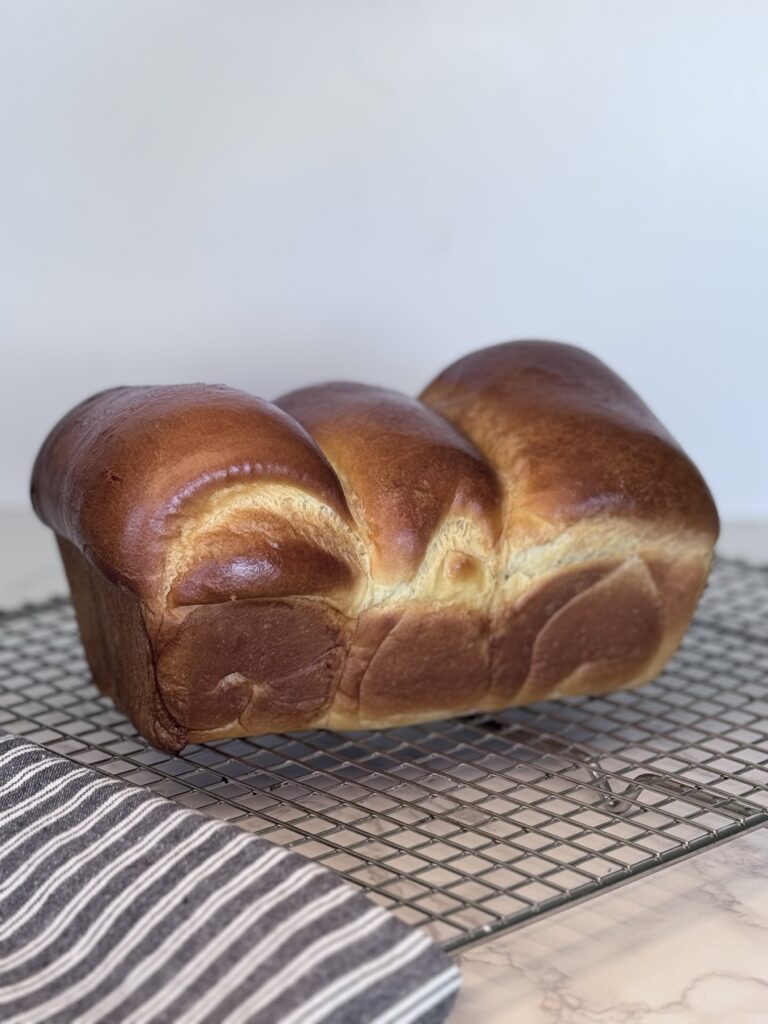
Where Did Milk Bread Come From?
Time for a little bread history, because we’re nerds like that, or at least I am. Japanese Milk Bread, or Shokupan, has its roots in Japan’s adoption of Western breadmaking techniques during the late 19th century. But leave it to Japan to take something basic and make it better. While the French were over here making crusty baguettes, Japan decided to create the softest, fluffiest bread imaginable—because why settle for chewy when you could have cloud-like perfection?
The secret weapon behind this is the tangzhong method, which actually originated in China. The Japanese took this technique, mastered it, and the result was milk bread—soft, slightly sweet, and an absolute dream. Nowadays, Shokupan is a breakfast staple in Japan, often eaten toasted with butter, jam, or even savory toppings like eggs or cheese. And now, thanks to the beauty of the internet, we can make it at home and pretend like we’re living our best lives in a Tokyo bakery.

Tips for Making Japanese Milk Bread
Ready to make your own Japanese Milk Bread? Here are some tips to help you nail that perfect, fluffy loaf:
- Nail the Tangzhong: The tangzhong is key to this recipe’s signature softness. You want it to thicken to a paste, like mashed potatoes. If it’s too runny, your bread won’t be as fluffy. And trust me, we’re here for the fluff. For once, we want fluff.
- Watch Your Milk Temperature: When proofing your yeast, make sure the milk is around 100°F. Too hot, and you’ll kill the yeast. Too cold, and it won’t activate. This is the one I own.
- Knead with Intention: Whether you’re using a stand mixer or doing it by hand (bless your heart), make sure to knead the dough until it’s smooth, elastic, and slightly sticky. If it feels like glue, keep kneading—your bread will thank you.
- Give It Time: Don’t rush the proofing process. Let the dough rise until it doubles in size. And if you’re proofing overnight in the fridge, don’t panic if it takes a bit longer to rise the next day—good things come to those who wait.
- Perfect Your Egg Wash: That golden-brown top? It’s all thanks to the egg wash. Don’t skip this step unless you’re using a pullman. But if you want that Instagram-worthy shine, egg wash is your best friend.
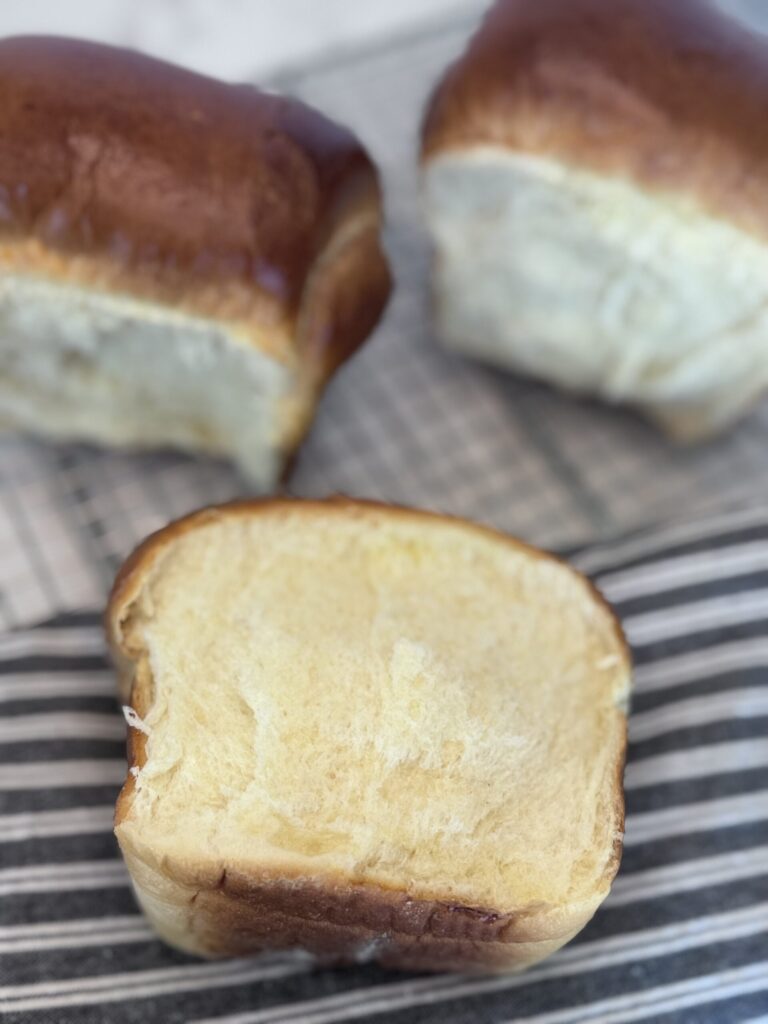
Make the Tangzhong
Step 1:
In a small saucepan over low heat, combine the flour and milk and cook, whisking constantly, until thickened to a paste, 2 to 3 minutes. Immediately transfer the paste into a small bowl, scraping the sides of the saucepan with a flexible spatula; let cool until warm, 5 to 10 minutes. The texture should resemble mashed potatoes.

Make the Milk Bread
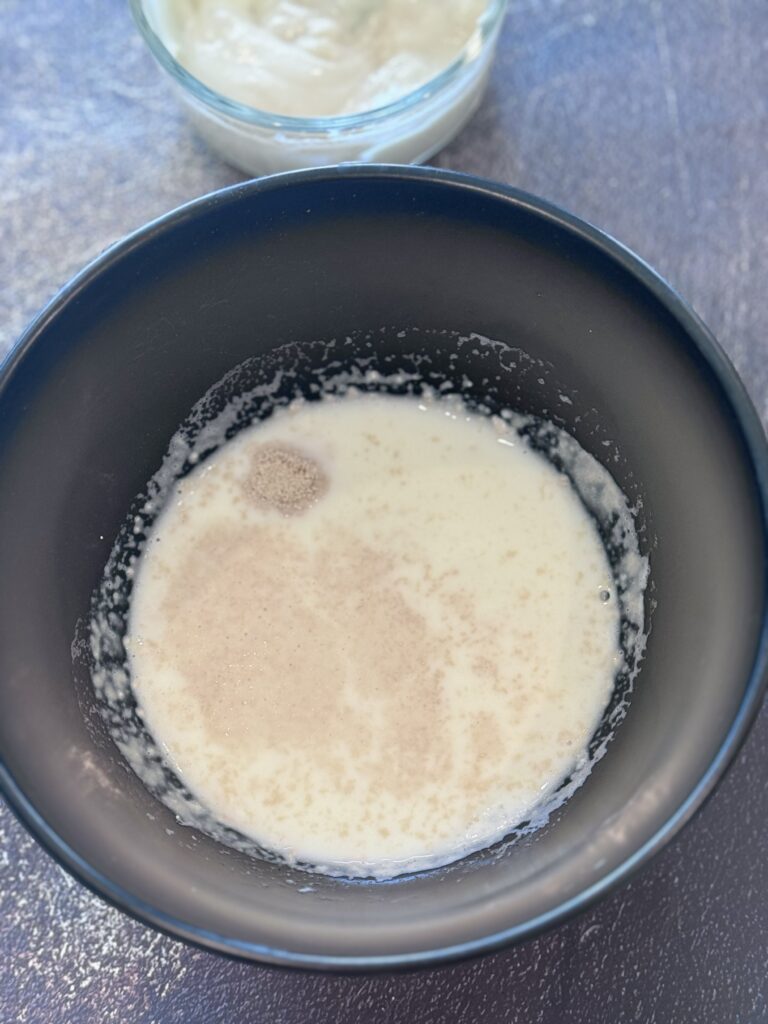
Step 1: In a clean or new small saucepan, scald the milk over medium heat, bringing the milk to a gentle simmer (watch carefully as milk tends to boil over). Pour milk into a small bowl and cool until warm to the touch (about 110°F). Stir in yeast and a pinch of sugar, and set aside until the surface of the mixture is foamy, 5 to 10 minutes.
Step 2: In the bowl of an electric mixer fitted with a dough hook, combine the sugar, flour, salt, and egg. Add the tangzhong and milk and mix on low until shaggy. Add the softened butter one piece at a time, mixing until fully incorporated before adding the next. Increase the speed to medium-high and continue to knead the dough until it is tacky and slightly sticky, 8 to 9 minutes. Transfer the dough to a lightly floured work surface. Wet your hands to prevent the dough from sticking, pinch and pull the ends of the dough to form a smooth ball.

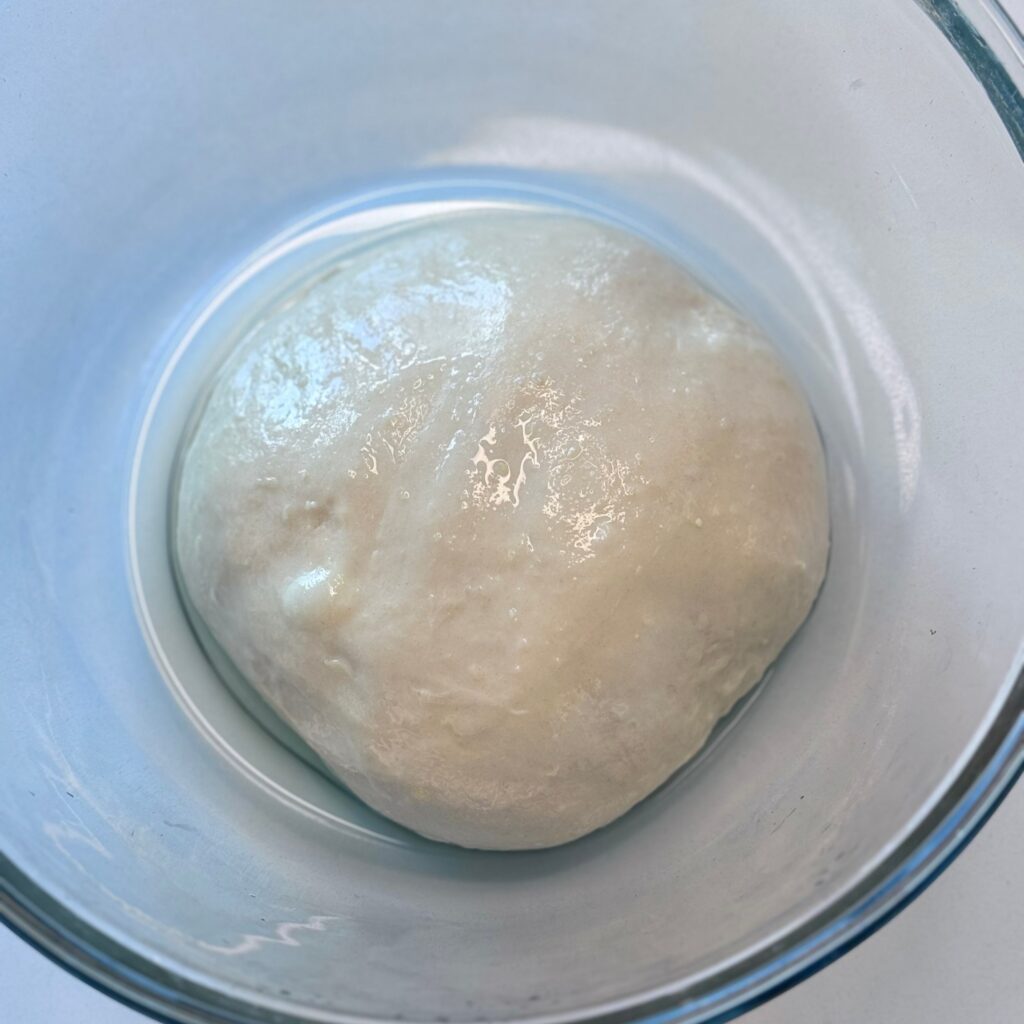
Step 3:
Coat a large mixing bowl with the 1 teaspoon of oil. Add the dough to the bowl, gently turning it to cover with oil. Cover the bowl with plastic wrap and set in a warm spot to proof until doubled in size, about 2 hours (or place in the refrigerator to proof for at least 8 hours or overnight).
Step 4: Transfer the proofed dough onto a lightly floured work surface. Punch down the dough to deflate it. Pinch and pull the ends of the dough to form a smooth ball.
Step 5:
Line the bottom and long sides of a 9 x 5-inch loaf pan with parchment paper. (If baking in a pullman pan there’s no need to line with parchment paper). Divide the dough into three equal pieces. Form each piece into a smooth ball. Roll out a piece of dough into a 5 x 8-inch oval. Fold the long edges of the dough over by 1/2 inch and then roll into a 4-inch log, starting at one of the short ends.
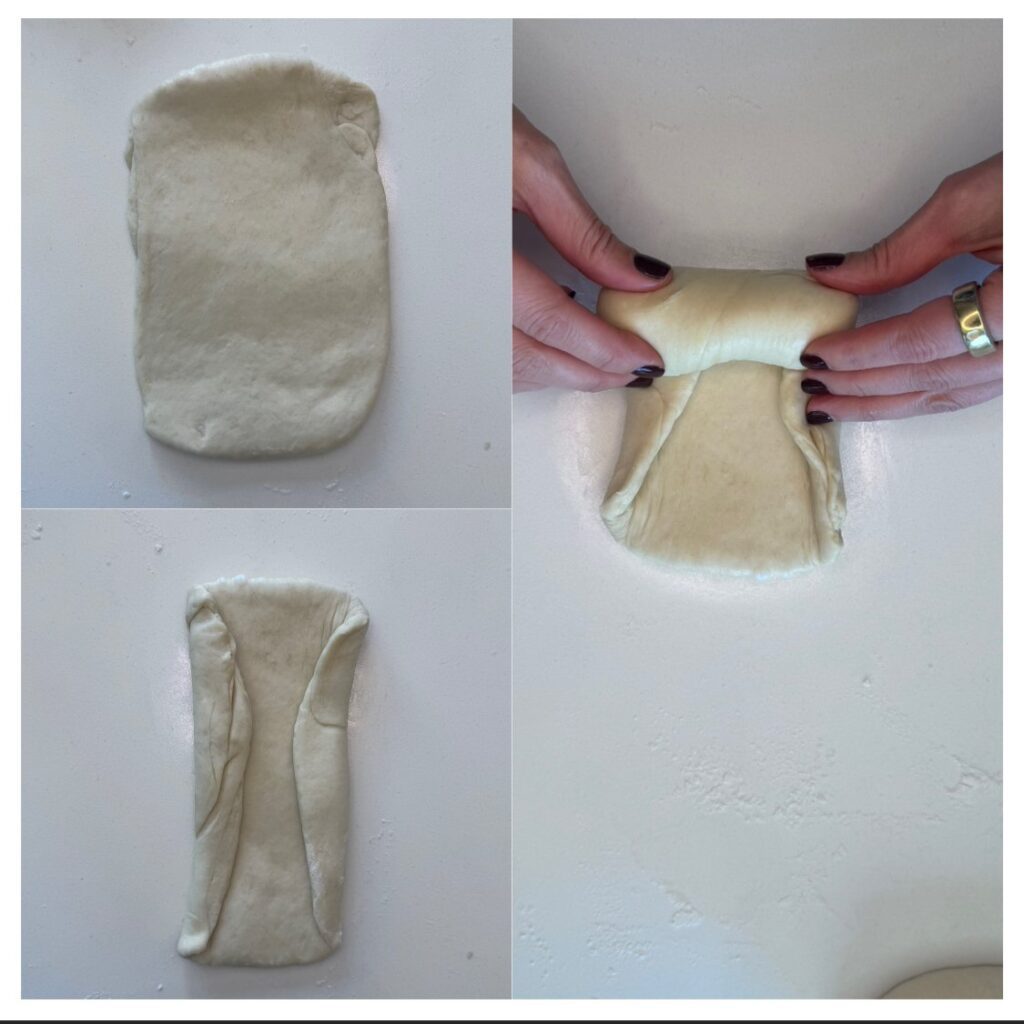
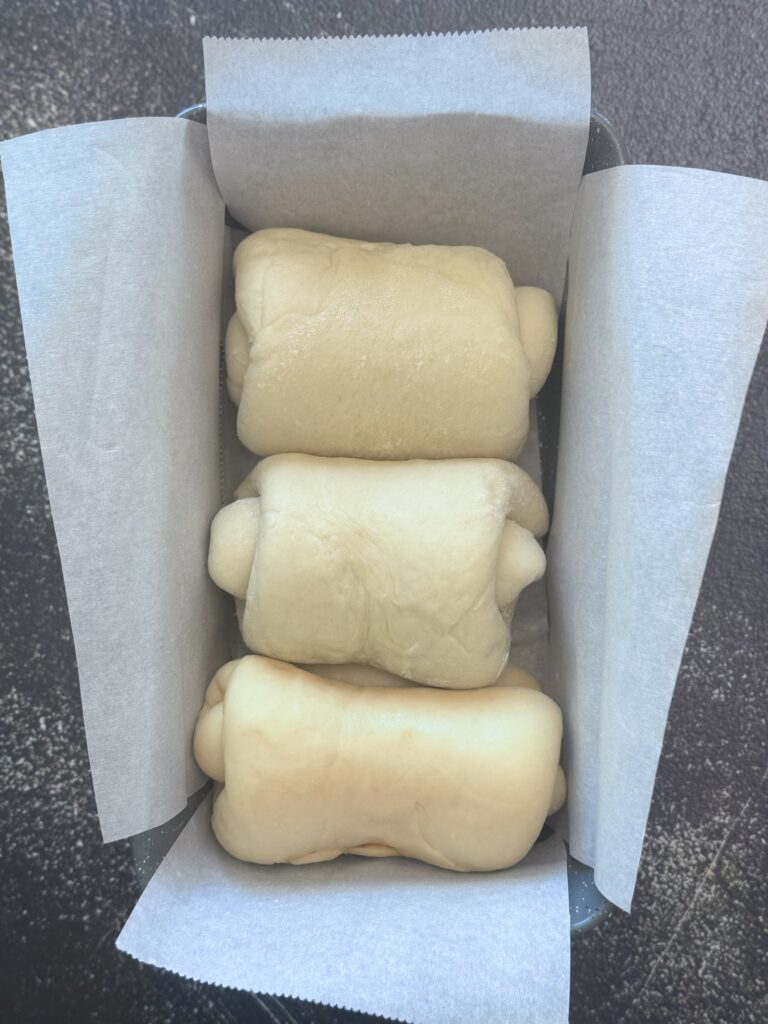
Step 6: Place the dough seam-side down, in the loaf pan. Repeat with the remaining two pieces of dough, placing them side by side in the pan. Cover the pan loosely with a damp, clean kitchen towel or plastic wrap and allow the dough to proof in a warm spot until it reaches just above the rim of the pan (or just below the rim for a pullman pan), 60 to 90 minutes.
The Final Slice: Your New Favorite Bread
So there you have it—Japanese Milk Bread, the ultimate soft and fluffy loaf that’s about to ruin all other breads for you. Whether you’re making sandwiches, French toast, or just tearing off pieces to eat straight from the pan, this bread has you covered. Give it a try, and once you experience the cloud-like perfection, you’ll wonder why you ever settled for anything less. If you make it, drop a comment or tag me in your photos—I want to see that fluffy masterpiece in action!
Recipe courtesy of Mookcakes and Milkbread.
✅ Quick Tips: Read the recipe in its entirety before you start cooking. This will help you understand the ingredients, steps, and timing involved, and allow you to prepare any necessary equipment or ingredients beforehand.
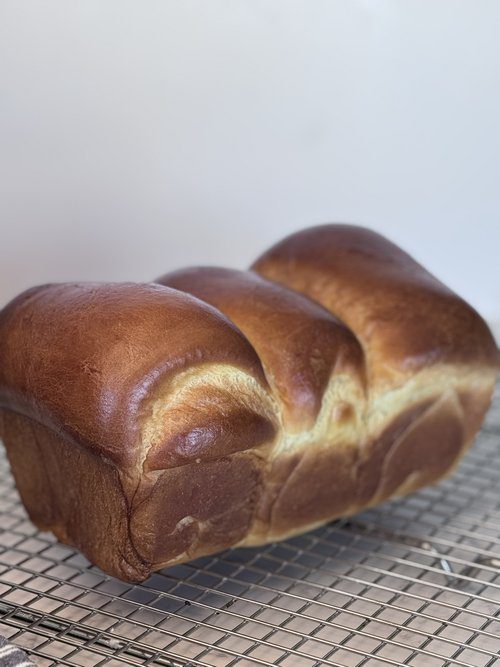
Japanese Milk Bread
Ingredients
For the Tangzhong
For the Milk Bread
For the Egg Wash
Nutritional Value
Nutritional Value
Servings 6
- Amount Per Serving
- Calories 371kcal
- % Daily Value *
- Total Fat 13g20%
- Trans Fat 0.3g
- Cholesterol 82mg28%
- Sodium 232mg10%
- Potassium 145mg5%
- Total Carbohydrate 53g18%
- Dietary Fiber 2g8%
- Sugars 10g
- Protein 11g22%
- Calcium 67 mg
- Iron 1 mg
* Percent Daily Values are based on a 2,000 calorie diet. Your daily value may be higher or lower depending on your calorie needs.
